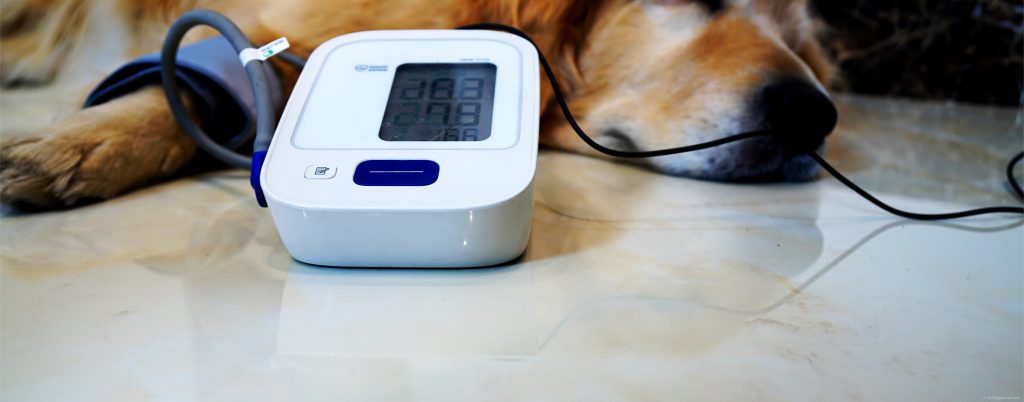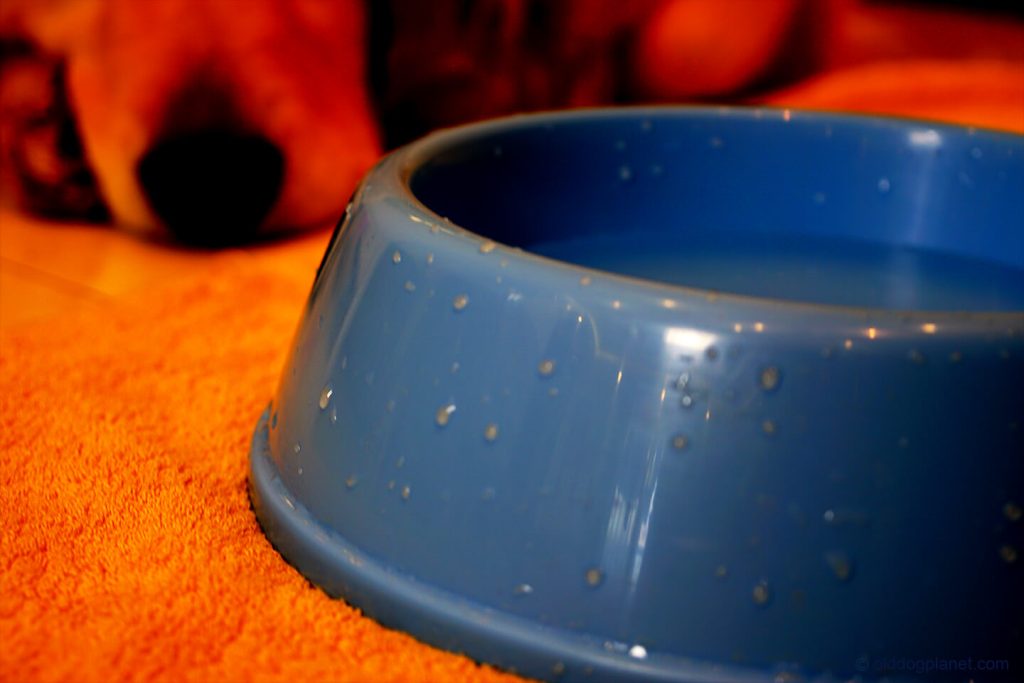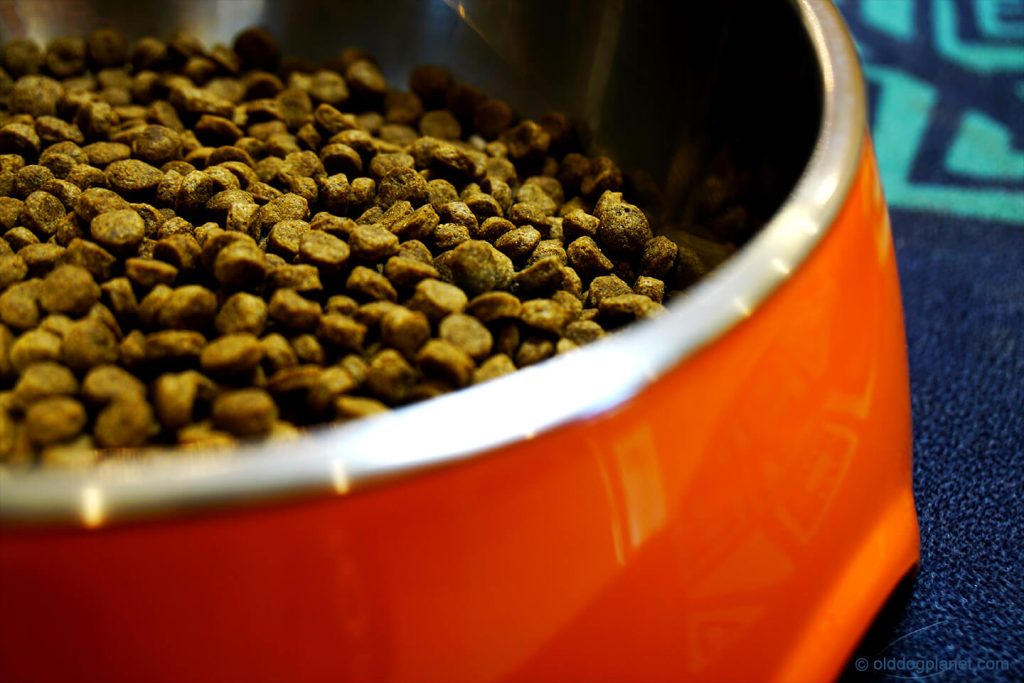The early signs of dementia in dogs have very important practical reference value for dog owners. Understanding the early signs can help us find clues of old dogs suffering from CCD(Dog dementia, AKA CCD: Canine Cognitive Dysfunction) as soon as possible, allowing us to take measures to delay the development of CCD. CCD in some old dogs tends to develop very quickly, without intervention, it will develop from early mild symptoms to typical symptoms, namely moderate or severe CCD, within half a year at the earliest.
Early signs of CCD:
- Sleep less and wake up frequently at night
- Show anxiety or fear towards family members or other animals
- Lack of interest in the approach, greeting or touching/petting
Yes, you read that right, the early signs of CCD are the above 3 points. Please focus on these aspects and observe whether your old dog has these symptoms.
You know, these symptoms, which are very mild and appear to be little different from normal behavior, are easily ignored by us, or sometimes we make a so-called reasonable explanation to the symptoms according to our understanding. For example, we tend to think that the dog wakes up at night just because he wants to pee, or that the dog’s anxiety towards family members is regarded as a coquettish.
To be honest, the early signs of CCD in dogs can be really hard to tell apart. This is not like the moderate and severe symptoms that make it easy for us to detect and realize that there is something wrong with the dog, such as peeing in the house, goes to hinge side of door, getting stuck and difficulty getting around objects.
There is a CCD rating scale at the end of this blog, which you can use to test your old pal to see if she shows signs of CCD or the severity of CCD.
Before filling out the CCD rating scale to check your dog’s early signs, we need to know which kind of dogs should be monitored closely. I’ll explain it in three parts:
- Age
- Nutrition and diet
- Periodontal disease
Age
Age is the biggest direct related factor of CCD. Generally, the older the dog, the higher the risk of CCD.
For all 8-11 years old dogs, regardless of breed and body size, CCD has been observed in about 1/4 of them, and they all need to be monitored for related symptoms (at this age, all breeds are equally likely to develop CCD). It is recommended that the CCD rating scale be tested at least once every 1-2 months.
- All breeds are equally likely to develop CCD in this age group
- The risk of CCD is 1/4 in this age group
- CCD rating scale be tested at least once every 1-2 months
For 11-13 years old dogs, there is a significant increase in the risk of CCD, especially about 50% of medium and large breed dogs are observed to have CCD. Please pay special attention to your old pal’s behavior if he or she is a medium/large breed. To be clear, this does not mean that small dogs of this age should not be monitored. Although small dogs are less likely to develop CCD than medium and large breed dogs of this age, there is no doubt that they are more likely to develop CCD as they age. It is recommended that the CCD rating scale be tested at least once every 0.5-1 month.
- A significant increase in the risk of CCD in this age group
- CCD occurs more frequently in large breed than in small breed in this age group
- CCD rating scale be tested at least once every 0.5-1 month
For dogs over the age of 13, about 90% of which, regardless of body size, have been observed to have CCD, which is a high probability. If your senior dog is already in this age group, it is recommended to take the CCD rating scale test once a week.
- All breeds are equally likely to develop CCD in this age group
- The risk of CCD is 90% in this age group
- CCD rating scale test once a week
| Risk of CCD | 8-11 years old | 11-13 years old | 13+ years old |
|---|---|---|---|
| Small breed | 25% | less than medium/large breed | 90% |
| Medium/Large breed | 25% | 50% | 90% |
Nutrition and diet
If your dog frequently consumes a mixed diet, you may need to pay closer attention to their daily behavior.
The term “mixed diet” here refers to the frequent consumption of:
- Homemade food (I know there is a lot of debate about homemade food, here is just some research findings for your reference)
- Food leftovers
- Kitchen garbage
- Dog food not specificed for dog breed and age
- Low quality dog food(Animal ingredients of unknown origin, additives that do not meet the AAFCO standard, etc.)
According to a research, dogs that keep eating high-quality breed and age specified dog food are about 3 times less likely to develop CCD than dogs on a mixed diet.
| Mixed diet | High-quality breed & age specified dog food | |
|---|---|---|
| CCD Risk | Relatively high | 3 times less likely than dogs on a mixed diet |
Periodontal disease
If your senior dog has severely inflamed gums or a buildup of tartar, you should be on the lookout for signs of dementia in the dog’s behavior. (My advice is that if your elderly dog has oral diseases, please treat them as soon as possible.)
In some studies, it has been shown that older dogs with CCD tend to exhibit worse periodontal disease than similarly aged dogs without cognitive dysfunction.
This is consistent with the results of human Alzheimer’s disease studies, in which Porphyromonas Gingivalis was found in the brains of people with Alzheimer’s disease, which enters the brain through the blood-brain barrier, and they cause the accumulation of β-amyloid, which confirms the theory of microbial pathogenicity.
In addition, Porphyromonas Gingivalis is widespread in dental plaque, a biofilm deposited on the surface of teeth, made up of food residues, exfoliated oral epithelial cells, saliva and bacteria, suggesting that poor oral hygiene is likely to increase the risk of CCD.
Here is the DISHAA Online Scoreing Scale. ? Click to evaluate online. The evaluation results will be displayed immediately after submission and no personal information or registration is required.
DISHAA Scoring Scale
(Disorientation; Interactions-social; Sleep/wake cycle; House soiling, learning and memory; Activity; and Anxiety)
Scoring system used to assess cognitive ability in senior dog (7 yrs.+)
(to help you quickly tell whether your senior dog has dementia)
The following is the dog’s possible performance since the age of 7. Please evaluate it according to your dog’s daily performance.
0 points: none
1 point: occasionally/mild
2 points: sometimes/moderate
3 points: always/severe
Disorientation
1. Gets stuck, difficulty getting around objects, goes to hinge side of door
▢None ▢Occasionally/mild ▢Sometimes/moderate ▢Always/severe
2. Stares blankly at walls, floor, or into space
▢None ▢Occasionally/mild ▢Sometimes/moderate ▢Always/severe
3. Does not recognize familiar people/familiar pets
▢None ▢Occasionally/mild ▢Sometimes/moderate ▢Always/severe
4. Gets lost in home or yard
▢None ▢Occasionally/mild ▢Sometimes/moderate ▢Always/severe
5. Less reactive to visual or sound stimuli
▢None ▢Occasionally/mild ▢Sometimes/moderate ▢Always/severe
Interactions (social)
6. More irritable/fearful/aggressive with visitors, family, or other animals
▢None ▢Occasionally/mild ▢Sometimes/moderate ▢Always/severe
7. Decreased interest in approaching, greeting, or affection/petting
▢None ▢Occasionally/mild ▢Sometimes/moderate ▢Always/severe
Sleep/wake cycles
8. Pacing/restless/sleeps less/waking frequently at night
▢None ▢Occasionally/mild ▢Sometimes/moderate ▢Always/severe
9. Bark at night
▢None ▢Occasionally/mild ▢Sometimes/moderate ▢Always/severe
House soiling, learning and memory
10. Less able to learn new tasks or respond to previously learned commands/name/work
▢None ▢Occasionally/mild ▢Sometimes/moderate ▢Always/severe
11. Indoor soiling of urine or stool/decreased signaling to go out
▢None ▢Occasionally/mild ▢Sometimes/moderate ▢Always/severe
12. Difficulty getting dog’s attention/increased distraction/decreased focus
▢None ▢Occasionally/mild ▢Sometimes/moderate ▢Always/severe
Activity
13. Decrease in exploration or play with toys, family members, other pets
▢None ▢Occasionally/mild ▢Sometimes/moderate ▢Always/severe
14. Increased activity including aimless pacing or wandering
▢None ▢Occasionally/mild ▢Sometimes/moderate ▢Always/severe
15. Repetitive behaviors, e.g., circling, chewing, licking, stargazing
▢None ▢Occasionally/mild ▢Sometimes/moderate ▢Always/severe
Anxiety
16. Increased anxiety when separated from owners
▢None ▢Occasionally/mild ▢Sometimes/moderate ▢Always/severe
17. More fearful to visual or sounds stimuli
▢None ▢Occasionally/mild ▢Sometimes/moderate ▢Always/severe
18. Increased fear of places/locations (e.g., new environments/going outdoors)
▢None ▢Occasionally/mild ▢Sometimes/moderate ▢Always/severe
Total scores are assessed as:
4-15 points: Mild Impairment
16-33 points: Moderate Impairment
>33 points: Severe Impairment
Note: If suspected of CCD, please consult a professional vet as soon as possible.




